I've done a fair share of website copywriting, and personally, the process of showcasing my published work was more troublesome than actually doing the work.
I could think and write without effort because that's what is second nature to me (in my work; in life, not so much). But finding all that writing, compiling it, uploading it to a portfolio... it was exhausting and uninteresting grunt work. I'm not sure if you share the depth of my ire, but it can't exactly be adding joy to your life.
I wasn't great at visualizing good design for my portfolio either, and I was creating some god-awful "portfolio websites." Even Squarespace and WordPress couldn't make up for my terrible eye. I knew I couldn't send those to recruiters.
Thankfully, I eventually figured things out with the help of a mentor/editor. But, in case you don't have a helpful soul to hold you up like, here are a few examples of how expert website copywriters do the job. These 5 examples of awesome copywriter portfolios will give you a good idea or two if you're fumbling with what a great website copywriter portfolio looks like.
But first, some basics if you're starting off with copywriting. If you're just looking for examples, scroll to the bottom.
• Definition and scope of website copywriting
• Best Practices for web copywriting
• Examples of web copywriter portfolios that meet and surpass industry standards
• A tool to help you create your own copywriter portfolio (with very little work): Authory
• Why use Authory — automatic importing of all bylined content AND automatic backup of ALL your imported content
What is website copywriting?
Website copywriting is literally "writing for the web." It refers to writing content for website pages, be they blogs, ad copy on sites, UI/UX writing, and so on. The point of website copywriting is to establish an online presence, showcase brand voice, and entice users to purchase/try out (for a sales page). The best copywriter will write copy to give your website a brand identity and persona in order to convince users to give said brand their attention. It will draw and retain a customer into the marketing funnel, ideally ending in conversion.
A good website copywriter and strategist can keep readers engaged and direct them to some form of action (buy something, sign up, submit a form, click a CTA on a landing page, etc.). Good copywriting, especially sales copy, is highly sought after by business owners. A top website will almost invariably have great copy. It’s also an essential component of content marketing, and in providing an optimal user experience.
What do copywriting services entail?
- Website Copy (UX Copy): Textual content that guides users through their journey on the website, persuading them to click CTAs (Call-To-Actions), buy products/services, or take any other action desirable to the brand. This includes the text on everything from the homepage, header, footer, and anything that helps with the user experience (UX) of the site.
- Ad Copy: Written copy to entice customers and get them curious/excited about an upcoming product, event, etc.
- Email Copy: Text for promotional/marketing emails to current or prospective customers.
- Blog Copy: Long-form content that is educational and descriptive in nature.
- SEO Copy: Content that helps rank a site or a specific web page on search engines.
- Sales Pages Copywriting: Landing page and sales page content intending to convince a user to click the Buy button.
- Video Copywriting: Written scripts to be vocalized in videos. While this used to be a niche, video copywriting is now a desired skill, given that video content rules the internet now.
- Social Media Copywriting: Words that accompany social media posts such as articles, images, videos, and reels, on platforms like Instagram, Twitter, Snapchat, TikTok, and so on.
Web Copywriting Best Practices for Beginners (whether you freelance or work full-time)
- Know the target audience: Who are you writing for? C-suite executives or K-pop fans? Do they want decisive analytical statements or tones carrying pleasant assurances? What brand identity would most attract them to the brand? The way you write, even the words you use (and the ones you absolutely do not) depends on understanding your readership. Potential clients expect copywriters to be adaptable to the requirements of the prospective customers, and to know what tone, voice, and verbiage will "compel" (more like appeal to) users to trust and invest in the brand.
- Be brief when possible: No one wants to read walls of text unless they are in the blog section — and even then, break it up into paragraphs people! Keep it short, pithy, snappy, and meaningful, and carry only the words that are completely necessary. Whatever the customer's background, always expect the visitor to be short on time — which means you have about a few seconds to connect with them through your copy.
- Start with what's important: For example, if a visitor is on a sales page, start with a customer testimonial. There is no one a potential customer will trust more than an existing customer because the latter gains nothing when the former makes a purchase. So, a word of approval from any of your current customers will go a long way in convincing a new lead. Similarly, become very clear on what is the most valuable information to be conveyed, and frontload it via your copy. Within the first couple of lines, the reader must know the heart of the matter, even if they don't know the details. They should get the message within seconds.
- Write the way you speak: I know how tempting it is to show off that English degree but reel it back. People don't want effusive words if they have to spend longer trying to figure out what you're saying. And, no one wants to affiliate with a brand that speaks jargon. Simply write the way you could converse with a friend or even an acquaintance you really like. Picture yourself actually talking to the reader, and write what you would say in that situation in the exact way you would say it.
5 Copywriter Website Examples That Deserve Your Attention In 2024
Here are 5 examples of excellent portfolios showcasing some of the best website copywriting you'll see. Some of them use Authory, others do not.
Elizabeth Smith
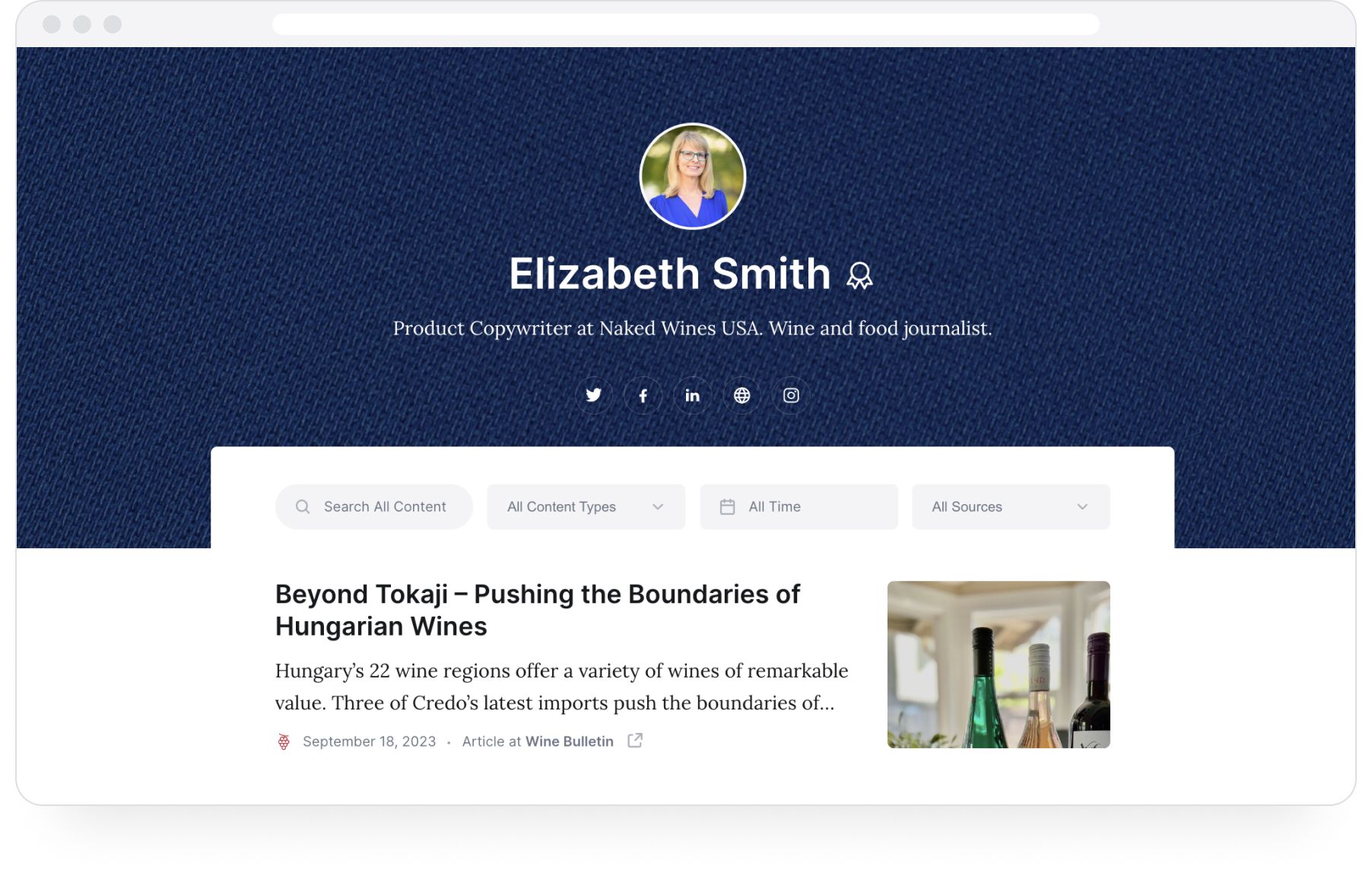
Elizabeth Smith is a former college professor and wine club manager turned copywriter and award-winning journalist.
On her website, she says,
Writing is my calling, especially my ability to capture and share your story. I entice readers to visit your business, taste your wines, and try your food. I am your written voice so you have time to do what you do best in your business.
Maggie Kim
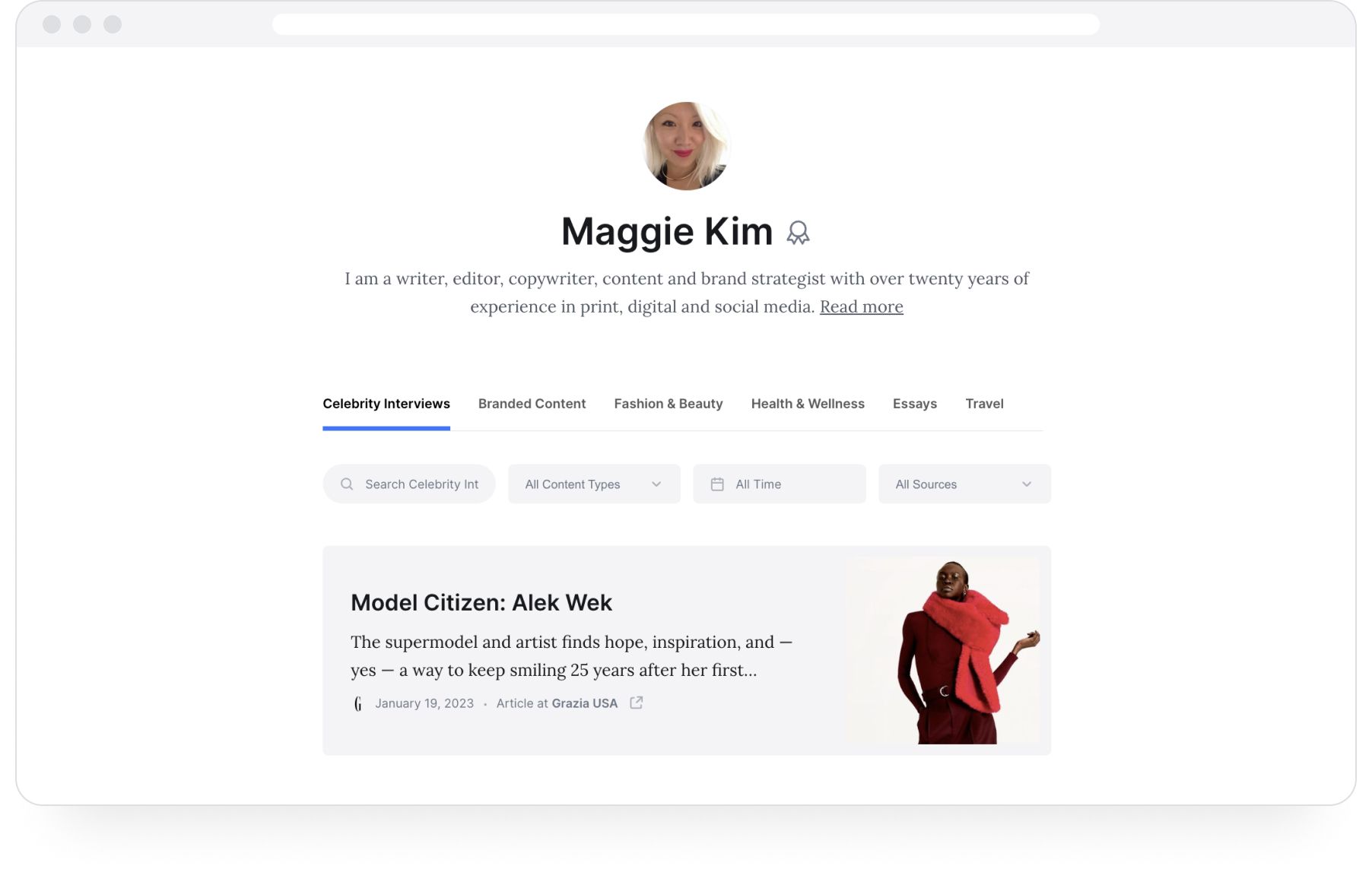
Maggie Kim is a writer, editor, copywriter, content, and brand strategist with over twenty years of experience in print, digital and social media. She has been a staff writer for national magazines and works with both established and startup companies to curate brand voice, refine storytelling, and optimize content strategy in beauty, fashion, food, entertainment, health, and wellness.
Ashley Hockney
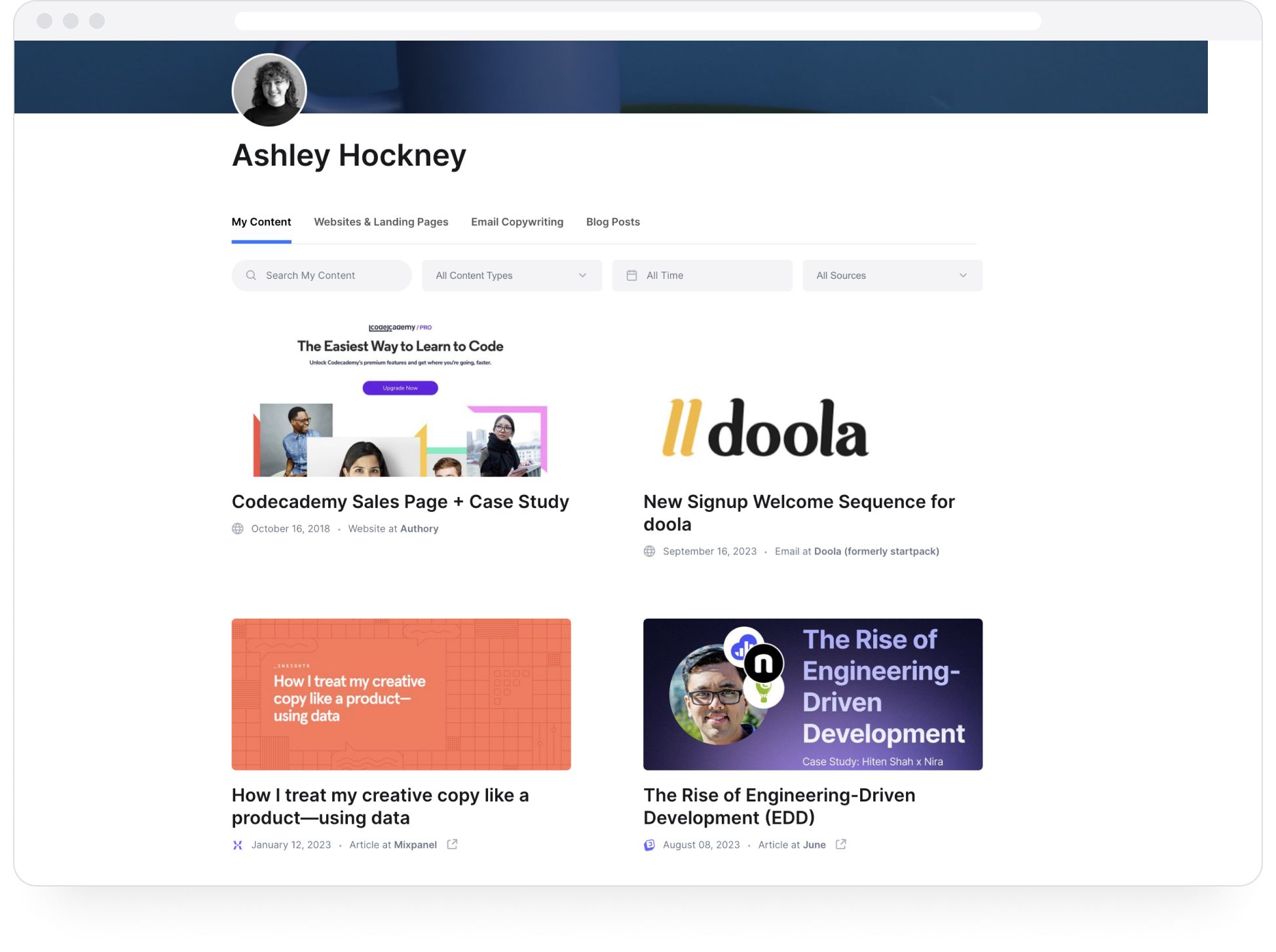
Ashley Hockney runs Hockney Marketing — a micro agency aimed at helping startups meet their conversion goals by optimizing the customer funnel (instead of paying for ads). On her website, she says,
Forget pouring money into paid. Until you have a funnel that converts, nothing else works. We’ll analyze your customers, optimize your content (landing pages, emails, UX copy), and monitor results infinitely.
She has worked with Teachable, Zapier, and Codecademy before focusing on revenue as the Marketing Director at Buffer. She has also consulted with teams at Major League Hacking, Plaid, and Mixpanel.
Kayla Hollatz
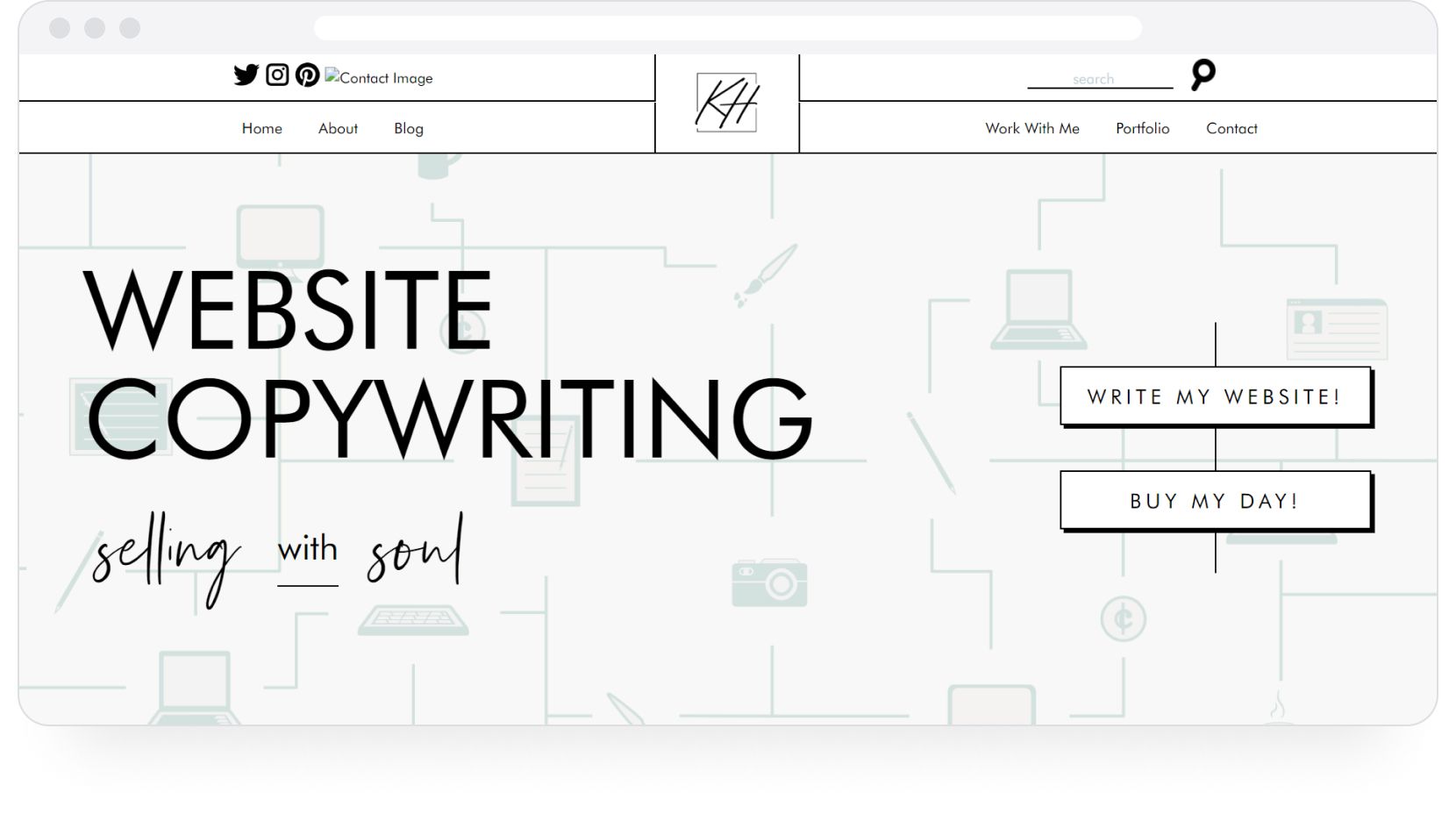
Kayla Hollatz is a website copywriter, ghostwriter, and marketing strategist who "loves nothing more than crafting brand stories with soul." She also really loves peppermint hot chocolate.
Kayla helps creative entrepreneurs and small businesses "communicate their value, discover their brand voice, and optimize their messaging for more conversions through website copywriting and ongoing content creation."
She has also published a memoir poetry collection titled Brave Little Bones in 2015.
Erika Fitzgerald
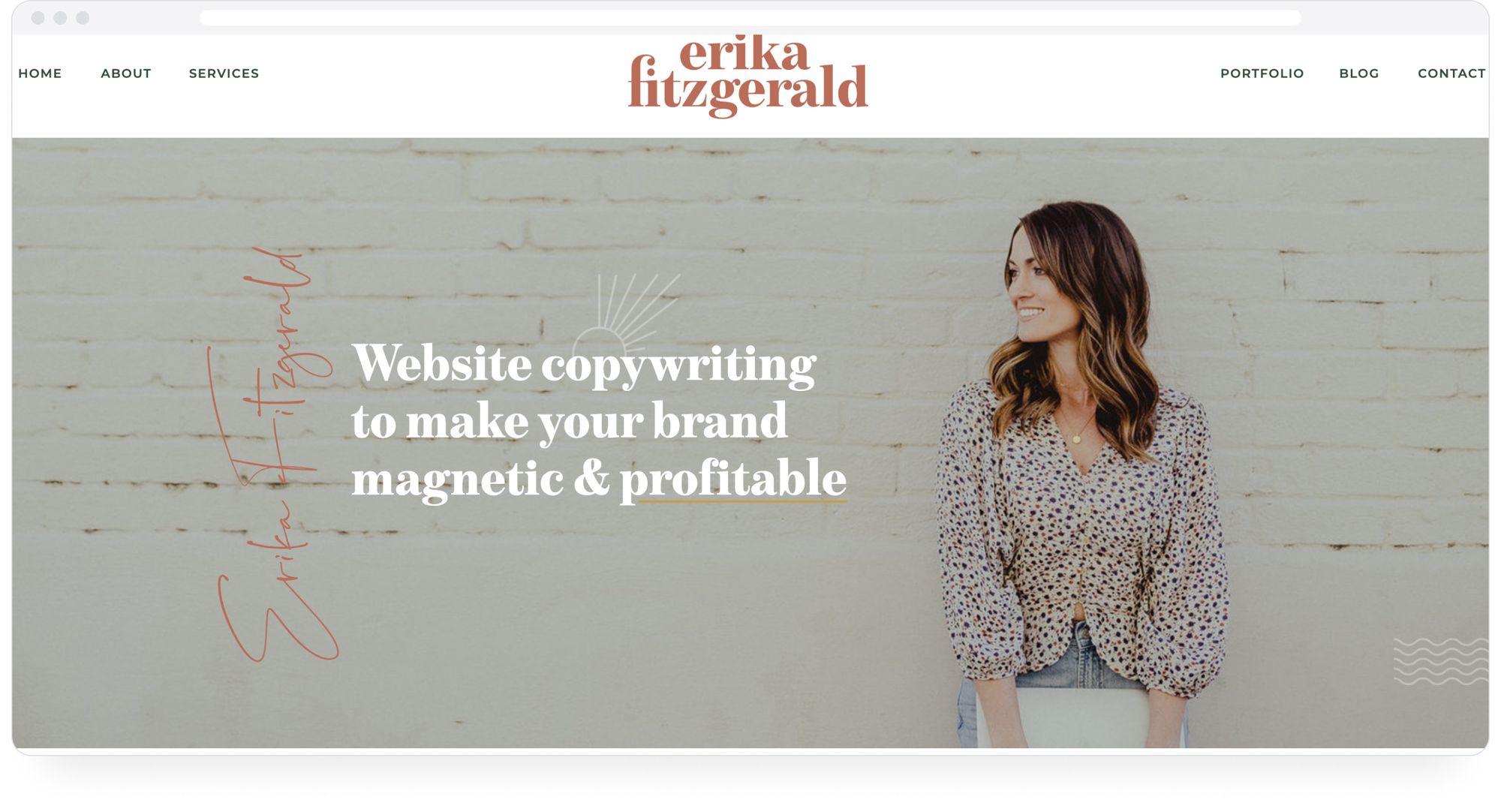
Erika Fitzgerald is a WFH website copywriter, strategist, and mentor. She works with digital-first brands to create copy that stands out and attracts user attention. To quote her site,
Because with over 200 million active websites on the internet today, it takes more than good design alone to stand apart and connect with people. To hook your audience from page one, earn a living, and impact lives doing what you love... you need good copy.
Authory: A tool to help showcase your website copy on your freelance website
Now that you know what a great copywriter portfolio looks like, how about a tool that helps you create such a portfolio (but with much less effort than you would expect)?
Enter Authory.
Authory is a dedicated portfolio-builder that doesn’t just give you the space to copy-paste links to your work. It literally does over half the work — finding all bylined content you’ve ever published, importing it automatically, saving it permanently (again, automatically), and enabling you to organize your pieces into different collections.
Here's what you get from Authory once you sign up:
A self-updating portfolio (no need to keep adding new work manually)
Authory will AUTOMATICALLY import a copy of every bylined piece from every site into its own database. You can even import, back up and add samples of your email and website copy to your Authory portfolio.
These sites are called "sources." You add as many sources as you want, and every single bylined piece from every single source will be imported automatically.
You don't have to track down links to your published work (especially older pieces). As long as you remember the URL of the site where your work exists, Authory will collate all your content for you in one dashboard.
Authory can import content from behind most soft paywalls (as long as it is a bylined piece) and some hard paywalls. However, it cannot be used to import copies of articles, podcasts, and videos you haven’t created or featured in.
There isn’t any need to manually upload/copy-paste your content. That said, if you happen to have any non-bylined content, you can always do so manually in those cases.
Automated backups (never lose your content, ever)
All the content that Authory imports from different sources is saved permanently. You'll never have to worry about losing any of your published work. Even if the original website where it's published goes defunct for any reason, you'll always have a copy safely stored on Authory's server.
All backups are in the original format — text and/or media. No screenshots. This is super important because it lets you search through your content database, making it a valuable research tool.
Continued importing of past and future content (less effort for a 100% updated portfolio)
Once you enter a source, Authory won't just import your existing publications. Anything you publish on the same site (after you've fed its URL into Authory) in the future will also be imported automatically. In other words, Authory will import your past and future content.
Authory also sends email notifications for every new piece it imports, so you'll always know if something you submitted has been published.
Apart from these, you also get a slew of miscellaneous but necessary features:
- Ability to search through both your portfolio and your content database to find articles/audio/videos based on keywords. Prospective employers and hiring managers can use this to look for topics on your portfolio, and you can use it to find specific pieces within your Authory content bank.
- Ability to create a custom domain with a click.
- All imported content can be downloaded as high-res PDFs or exportable as HTML files — no lock-in period.
- Get a custom domain and personalize your portfolio even further.
- Multiple, low-effort options for customization to make your portfolio visually appealing and easy to navigate.
- In-built analytics that provide real numbers on content performance (engagement, readership) across the web and popular social media sites every 30 days. You get to see how your readers/viewers are responding to your work.
- Allows creation of newsletters with a couple of clicks. After setup, Authory will automatically send your newly published content to subscribers.
- Widgets to display your personal portfolio on other sites, such as your personal website (if you have one).
Curious? Get started for FREE and see what Authory can do for you.




